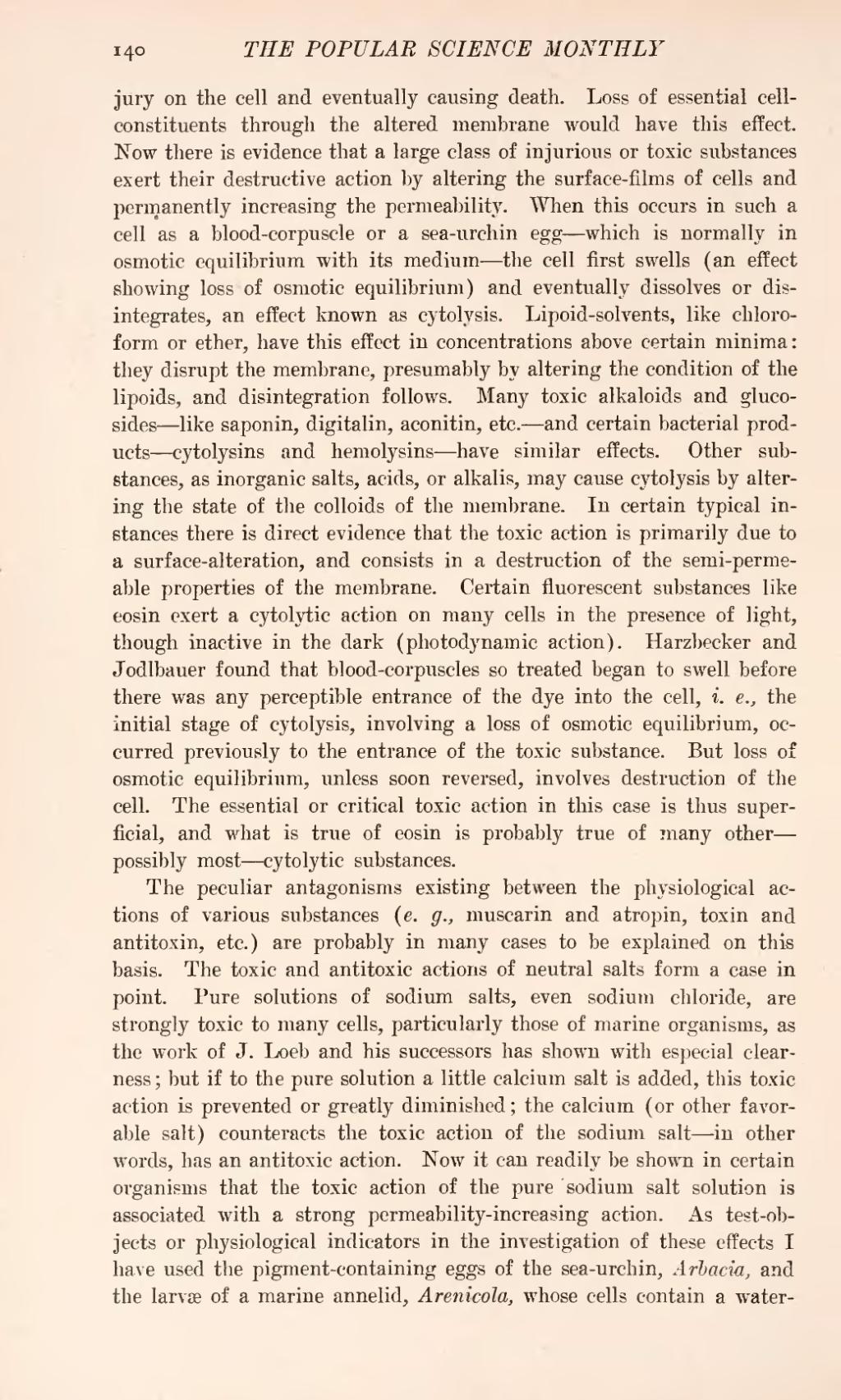jury on the cell and eventually causing death. Loss of essential cell-constituents through the altered membrane would have this effect. Now there is evidence that a large class of injurious or toxic substances exert their destructive action by altering the surface-films of cells and permanently increasing the permeability. When this occurs in such a cell as a blood-corpuscle or a sea-urchin egg—which is normally in osmotic equilibrium with its medium—the cell first swells (an effect showing loss of osmotic equilibrium) and eventually dissolves or disintegrates, an effect known as cytolysis. Lipoid-solvents, like chloroform or ether, have this effect in concentrations above certain minima: they disrupt the membrane, presumably by altering the condition of the lipoids, and disintegration follows. Many toxic alkaloids and glucosides—like saponin, digitalin, aconitin, etc.—and certain bacterial products—cytolysins and hemolysins—have similar effects. Other substances, as inorganic salts, acids, or alkalis, may cause cytolysis by altering the state of the colloids of the membrane. In certain typical instances there is direct evidence that the toxic action is primarily due to a surface-alteration, and consists in a destruction of the semi-permeable properties of the membrane. Certain fluorescent substances like eosin exert a cytolytic action on many cells in the presence of light, though inactive in the dark (photodynamic action). Harzbecker and Jodlbauer found that blood-corpuscles so treated began to swell before there was any perceptible entrance of the dye into the cell, i. e., the initial stage of cytolysis, involving a loss of osmotic equilibrium, occurred previously to the entrance of the toxic substance. But loss of osmotic equilibrium, unless soon reversed, involves destruction of the cell. The essential or critical toxic action in this case is thus superficial, and what is true of eosin is probably true of many other—possibly most—cytolytic substances.
The peculiar antagonisms existing between the physiological actions of various substances (e. g., muscarin and atropin, toxin and antitoxin, etc.) are probably in many cases to be explained on this basis. The toxic and antitoxic actions of neutral salts form a case in point. Pure solutions of sodium salts, even sodium chloride, are strongly toxic to many cells, particularly those of marine organisms, as the work of J. Loeb and his successors has shown with especial clearness; but if to the pure solution a little calcium salt is added, this toxic action is prevented or greatly diminished; the calcium (or other favorable salt) counteracts the toxic action of the sodium salt—in other words, has an antitoxic action. Now it can readily be shown in certain organisms that the toxic action of the pure sodium salt solution is associated with a strong permeability-increasing action. As test-objects or physiological indicators in the investigation of these effects I have used the pigment-containing eggs of the sea-urchin, Arbacia, and the larvæ of a marine annelid, Arenicola, whose cells contain a water
